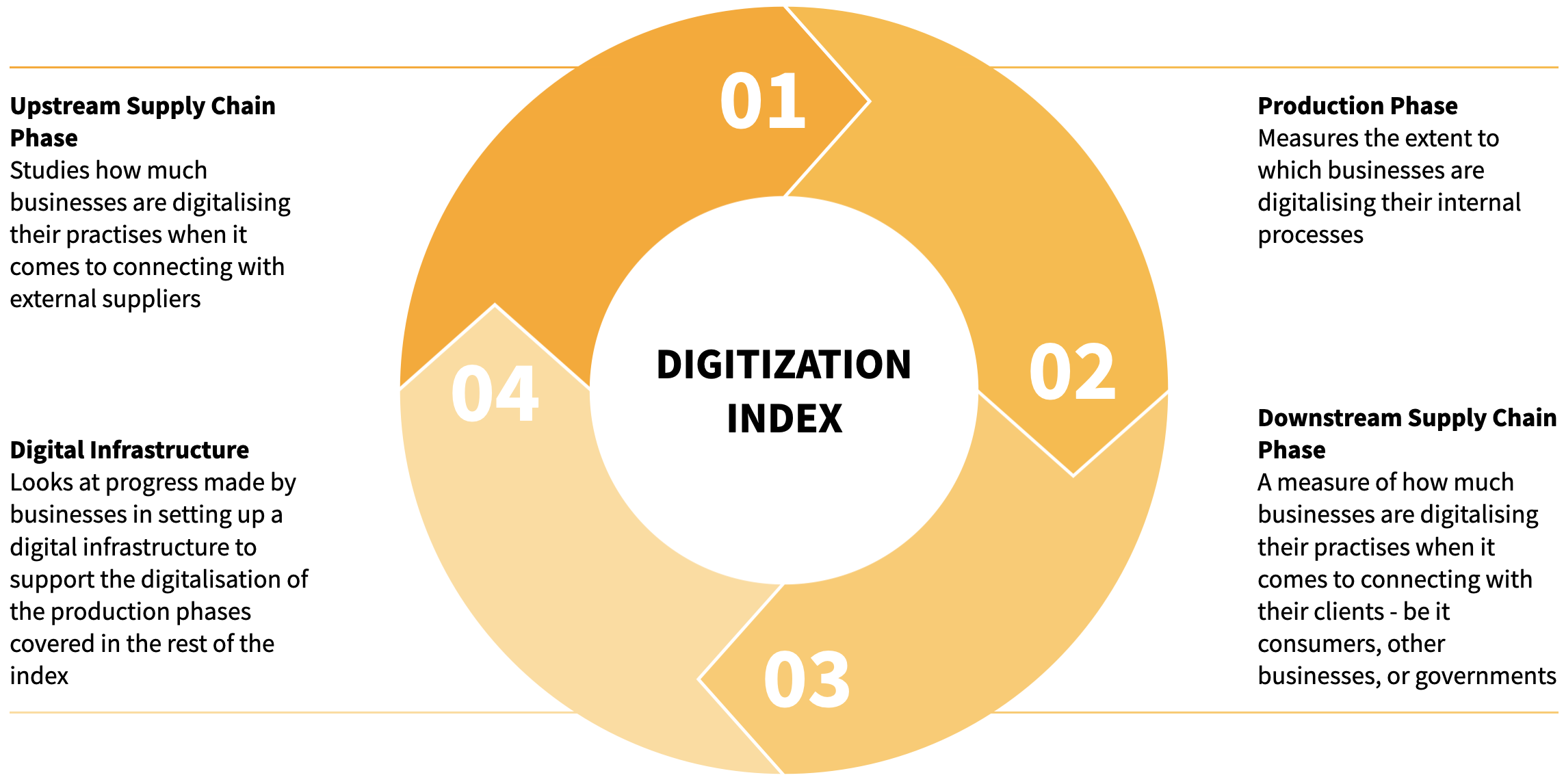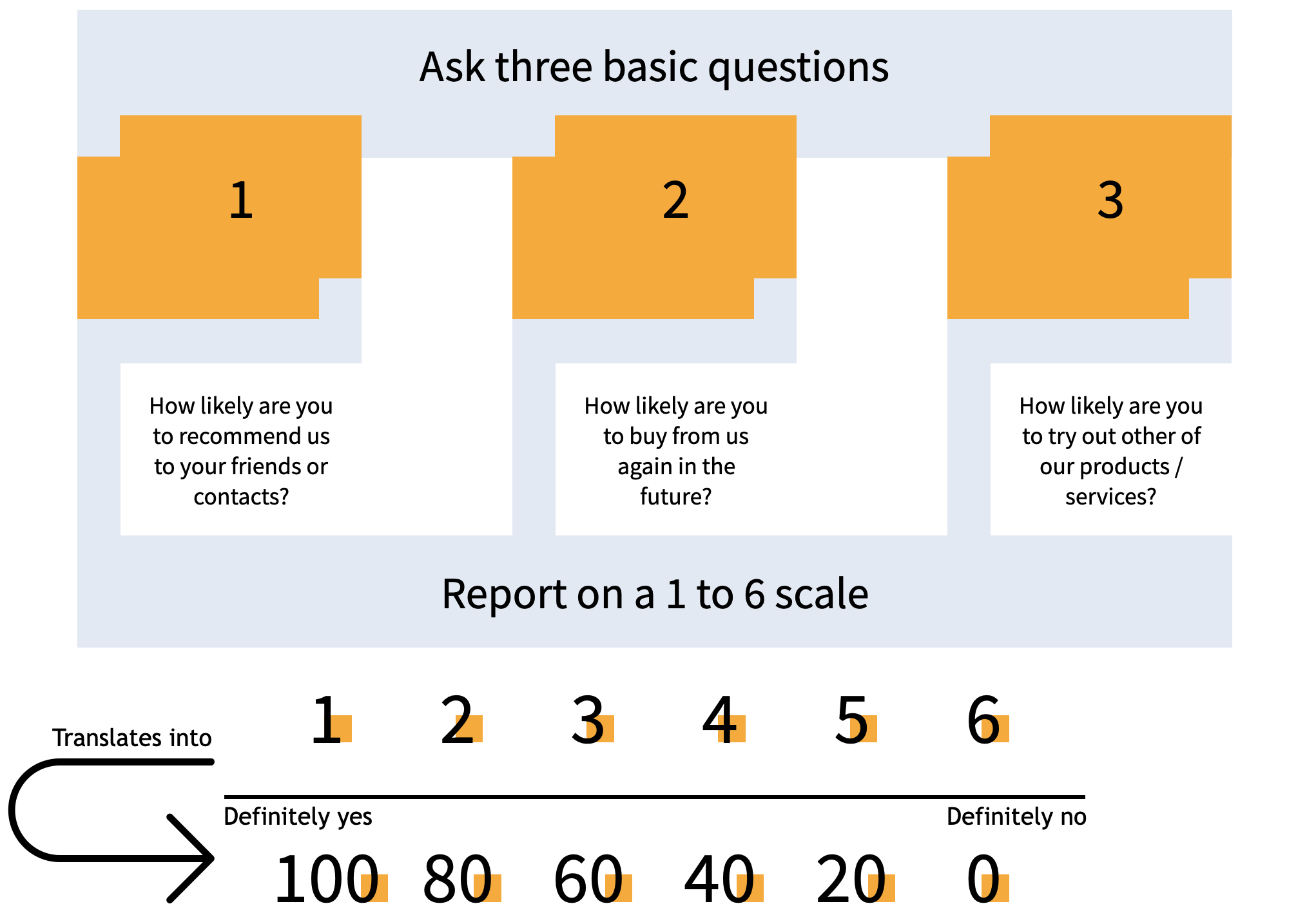Only what gets measured gets managed
Authors: Maximilian Beichert, Andreas Bayerl
5 minutes reading time
A holistic Digital Customer Experience Index enables benchmarking on a multidimensional scale. The scale can identify weak spots and potentials for improvement. Furthermore quality enrichment on all relevant marketing facets can be assured. The index summarizes a collection of indices in a single base figure and hence allows to measure up and down movements over time.
The Digital Customer Experience is the result of many partial experiences along the customer journey (Lemon and Verhoef 2016). The customer journey can be divided into touch points of the customer with an organization in the pre-purchase stage, the purchase stage and the post-purchase stage. Within this cycle the customer has past, current and future experience touchpoints with the organization, either firm-initiated or customer-initiated. Customer experiences are not formed in a one-shot event. They result from customers’ multiple interactions with an organization across the customer journey.
The Digital Customer Experience is twofold splitting in customer experience and digitalisation. The customer experience consists of value for the customer, ease of use and a positive feeling about the experience overall. The digitalisation consists of the connectivity and the integration of digital skills.
A multi faceted CDXE Index
Digitalization Index
Digitization Index
The digitalization index tracks how well progressed and advanced an industry or sector is with regard todigitizing and digitalizing its processes. While it was initially developed for the macro-perspective of looking at an entire industry (DMCC 2018), we argue it can be adapted for a micro-perspective of looking at a single organization, or even an organization’s department. It is a crucial component for providing a good digital customer experience. It looks at how an entity is doing with regard to the Digital Transformation and tries to find out how well transformed it already is.
This comprises the digital infrastructure put in place around the production phase, but also the upstream and downstream supply chain phase. Talking about the production phase, examples would be the number of employees equipped with hand-held devices allowing them to connect to the Internet to e.g. look for the repair manual of a machine, order a necessary repair item or just report a certain machine issue internally. The upstream supply chain can also showcase different levels of digitalizations. To give an example: Ideally, machines themselves order new parts that they feel or they predict they will need soon. Alternatively, an employee can easily order them online with a supplier. The worst case scenario would involve multiple phone calls, and a lot of “please-hold-the-line”. Similarly, the downstream supply chain can also display varying levels of digitalization. Organizations that allow their customers (be it B2C or B2B) to order, reserve and inquire online can be considered as rather digitalized, whereas organizations that prefer the offline communication lie rather on the other end of the scale.
Customer Satisfaction Index
Customer Satisfaction is considered a leading indicator for an organization’s financial performance as it is considered a great tell-tale for consumers’ repurchase intentions and their loyalty. We argue that an organization providing a good level of customer digital excellence also has satisfied customers. This will be very beneficial as an outstanding customer satisfaction is a valid point of differentiation and reduces churn (Gustafsson et al. 2005) and negative word-of-mouth. Thus it seems logical for us to include customer satisfaction in one form or the other in the measurement of CDX.
A well-established method of measuring customer satisfaction is the ACSI (American Customer Satisfaction Index) score, which is derived from three questions assessed on a 10-Likert Scale (Anderson 1998).
Key ACSI Findings
Source: (ACSI 2020)
Customer Loyalty Index
The Customer Loyalty Index (CLI) measures how loyal your customers are over time. Loyalty can show itself in various forms, either by repetitive purchases but also through positive referencing to others about one’s positive experiences. Having loyal customers is another tell-tale that an organization indeed offers a great Customer Digital Experience. Especially taking into consideration that acquiring a new customer is several times more costly than keeping existing ones (Blattberg and Deighton 1996). This is why we argue for its inclusion in the overall assessment and measurement of CDX.
CLI Score
The total Customer Loyalty Index is composed by the average of the three responses to the three basic questions asked above.
Service Quality Index
Service Quality (SQ) is defined as achievements in customer services (Kenzelmann 2008). The way that Service Quality is conceptualized is through a comparison of the service customers expected (E) with the service that customer then perceived (P). If expectations were higher than what was perceived, customers are disappointed. However, if an organization is able to even surpass a customer’s expectations, then customers will be satisfied.
Since its development in the eighties, the SERVQUAL model (Parasuraman 1985) is considered as the framework used to measure quality in service sectors. In its revised form that is taught across all Business Schools world-wide and used across a range of industries and settings, five dimensions go into it: reliability, assurance, tangibles, empathy and responsiveness.
The SERVQUAL Model
Source: Parasuraman 1985
Social Media Index
The Social Media Index (SMI) measures how well the company's appearance on available social media channels is developed. There exist many ways (Arora et al. 2014) to measure such an Index. The extent of development can be further split up in the number of social media channels used by the company, the rate of active engagements between and within channels, the social media subscribers and active relevant audience, and the strategic alignment of content across channels. Today a large amount of social media channels are available for a firm and can be exploited for various purposes. The mix of the channels has to be carefully evaluated in order to meet each firm's needs. Not every channel is ultimately useful for the desired purpose of the firm and hence should not be necessarily included in the social media strategy.
Components of the Social Media Index Optik
References
● Anderson, E. W. (1998). Customer satisfaction and word of mouth. Journal of service research, 1(1), 5-17.
● Arora, A., Arora, A. S., & Palvia, S. (2014). Social media index valuation: Impact of technological, social, economic, and ethical dimensions. Journal of Promotion Management, 20(3), 328-344.
● ACSI (2020), “The Science of Customer Satisfaction”, avilable here
● Blattberg, R., and Deighton, J. (1996), Manage Market- ing by the Customer Equity, Harvard Business Review, July–August, 136–144
● DMCC (2018), “The future of trade”, available here
● Gustafsson, A., Johnson, M. D., & Roos, I. (2005). The effects of customer satisfaction, relationship commitment dimensions, and triggers on customer retention. Journal of marketing, 69(4), 210-218.
● Lemon, K. N., & Verhoef, P. C. (2016). Understanding customer experience throughout the customer journey. Journal of marketing, 80(6), 69-96.
● Parasuraman, A., Zeithaml, V. and Berry, L.L. (1985), “A conceptual model of service quality and its implications for future research”, Journal of Marketing, Vol. 49, Autumn, pp. 41-50
● Peter Kenzelmann. Kundenbindung German, 3. Auflage, Berlin: Cornelsen Verlag Skriptor GmbH & Co KG 2008






